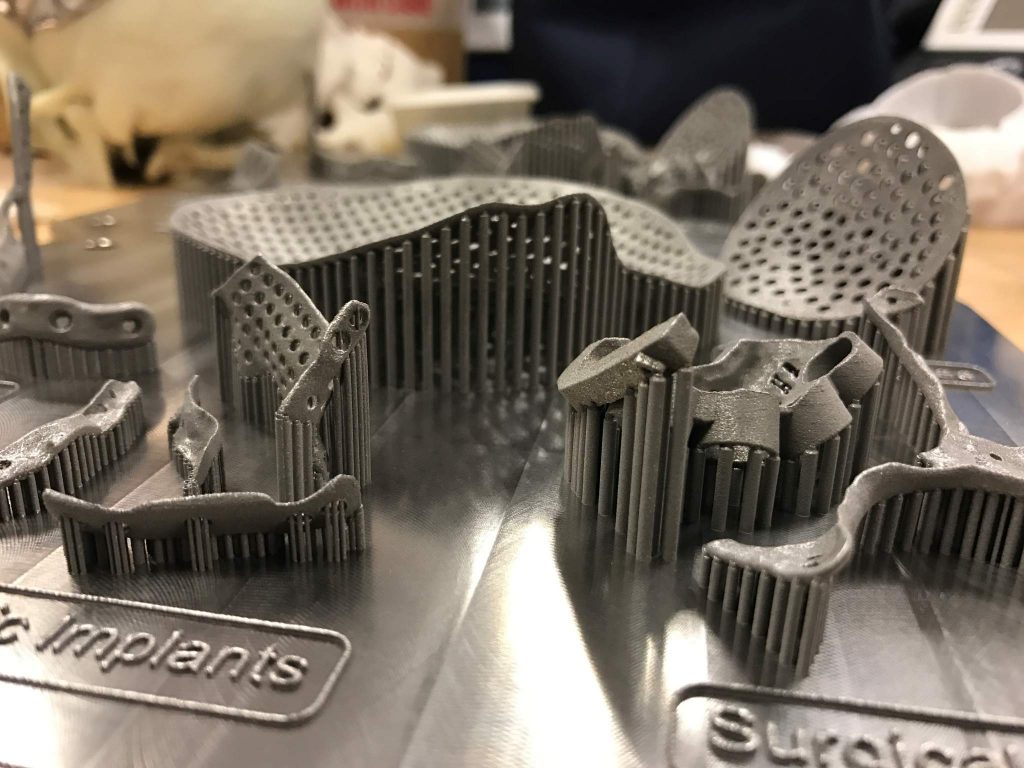This is a guest post in our series looking at the future of 3D Printing. To celebrate 5 years of reporting on the 3D printing industry, we’ve invited industry leaders and 3D printing experts to give us their perspective on the next 5 years of 3D printing.
Amy Davey is a member of the Reconstructive Prosthetics team at Southmead Hospital, Bristol, UK and Medical and Dental Products Division at Renishaw. Renishaw are a leading additive manufacturing OEM.
3D Printing: The Next Years by Amy Davey
Predicting the future of 3D printing within healthcare is a tricky one! The difficulty I have is not knowing where the NHS is heading. I can easily explain our needs and desires, however when it comes to what I think could actually happen, things become a little hazy.
Personal experience has highlighted to me that public healthcare is relatively slow on the uptake of technologies, occasionally to its benefit as well as its loss! Research of materials, proof of benefits to the system and understanding of appropriate use of 3D printing within healthcare are increasingly prevalent. This is allowing implementation of such technologies to become a requirement, not just an aid.

The evolution of 3D printing in healthcare
Surgical planning is currently undertaken often with a 3D-printed model of the patient. Not only does this allow clinicians and surgeons to accurately plan procedures for improved patient outcome, but as a direct consequence time and cost are reduced. Having a 3D model for the purposes of pre-surgical planning and device preparation was a luxury when this was first available. However as increasingly sophisticated software, touch-free interaction development and varieties of materials for printing are progressing, it is quite often not necessary to print a medical model for this purpose. In the most advanced cases, this middle stage is removed and the actual medical devices are now printed (such as custom implants, splints and guides previously made using the model), resulting in the medical model becoming merely a digital tool for customisation.
For this reason, I feel that use of 3D printing within healthcare is already evolving, even though some do not yet have the opportunity to use it at all. It is very likely that most procedures will use 3D visualisation and use of custom 3D-printed patient devices, as a matter of normal practice within the next 5 years. If not already, hospitals will have access to affordable 3D printing with realistic time-frames for provision of devices. It seems that speed, efficiency and waste require focus to improve 3D printing overall.
With these enhancements, availability, understanding and reducing costs, the benefits of 3D printing for patient care will largely outweigh the argument against current use (high cost, lack of trained staff, lack of knowledge of use).

Saving time, eliminating procedures
For this to happen, the NHS organisation must take a new path to understand the types of cost savings these processes may provide; the higher initial cost of software, machines and devices are largely outweighed by time saved for planning, manufacture, patient procedures, operating times when compared to traditional techniques. Potentially hours of theatre time can be saved (even complete procedures eliminated) through use of 3D printing in healthcare, improving patient treatments, thus allowing an increased number of patients to be treated. Staff and patient time can be used more effectively, resulting in a more efficient and more effective NHS.
This advancement is a real possibility within the near future and although a small step in comparison to the rest of the 3D printing industry, it is a key development for 3D printing. Instead of its use being only for complex cases, 3D-printed device use is likely to increase for use with routine procedures too (directly or indirectly). Bio-printing and the printing of body parts or organs is also happening; no doubt this could be the future’s answer to the customised treatment, however the hard work continues with that one.

Bridging the gap between healthcare and industry
The greatest challenge will be bridging the gap between healthcare and industry; knowledge and training are the first hurdle, which can be significantly eased by software created directly for use by healthcare professionals.
Once the connections are made, the growth of healthcare possibilities can escalate to the dream of ultimate personalised treatment that offers quick, cost effective, superior treatment specifically tailored to each individual’s needs (patient and surgeon).
It looks like 3D printing will play a significant role in that.
This is a guest post in our series looking at the future of 3D Printing, if you’d like to participate in this series then contact us for more information. For more insights into the 3D printing industry, sign up to our newsletter and follow our active social media channels.
More information about Renishaw is available here.
Don’t forget that you can vote now in the 1st annual 3D Printing Industry Awards.
Featured image shows finished additive manufactured titanium implants and surgical guides attached to build plate prior to post-processing. Photo via Renishaw.


